Demystifying the Contraflow Transit Lanes
or: How I Learned to Stop Worrying and Love the Contraflow Transit Lanes
Those who patiently follow me on Twitter know that I've extensively discussed the "contraflow transit lane" in the past year. In this concise post, I'll explain how it operates and its applicable scenarios. I'll also address concerns raised by those unfamiliar with them (are they less safe?)—a quick guide to introduce people to the overlooked aspects of this transit priority tool. Throughout the post, I'll refer to them as "contraflow TRANSIT lanes" to encompass various forms of surface mixed-traffic transit, including tramways and trolleybuses.
It’s just a two-way street (with a tweak)
Firstly, what exactly is a contraflow transit lane? When people hear "contraflow," they might envision a complex setup where buses navigate perilously against the primary flow of cars, akin to salmons swimming upstream. The concept of contraflow bike lanes, more familiar in the North American transportation field, can be a misleading homonym. Depending on their configuration, contraflow bike lanes may still bear some resemblance to the "salmon swimming upstream" situation, posing multiple conflict points with general traffic, especially in the common setup of a simply off-set painted lane in a one-way street with parking on both sides or the unprotected curb-side configuration.
Another "contraflow" configuration that may come to mind is the rush-hour-only highway contraflow bus-only reversible lane, experimented in the 1960s-1970s in the US and still present in a few locations today, such as the Lincoln Tunnel XBL, or the rather unconventional rush hour-only contraflow BRT that existed on Pie-IX Boulevard in Montréal from 1990 to 2002. However, that's not the focus of this discussion.
To put it much simpler, the most common contraflow transit lane configuration equates to a vanilla two-way street, with one direction reserved to transit. As simple as that.
This is also how NACTO’s guidelines describe them: “the ideal contraflow bus lane is designed similar to a regular 2-way street, with non-transit vehicles barred from using the lane or lanes in one direction”. They are not an unknown beast in North American transit practice. However, NACTO’s guidelines greatly narrow down their application, affirming that “contraflow bus lanes are typically applied to bus routes to create strategic, efficient connections rather than as a continuous application along a corridor”. I (or, better, real-life examples outside of North America) disagree with NACTO’s statement. I will come back to that later in the post, to illustrate some real-life examples of how contraflow transit lanes are used both tactically (not only for local connectivity, but to induce a given circulation pattern at the local level) and strategically (for entire corridors, to shape traffic flows at the larger neighborhood or even city-wide scales). But first, let me highlight what are the advantages of contraflow transit lanes compared to other curb-side configurations.
Why contraflow bus lanes are good: outmaneuvering the inevitable “fight for the curb”
One of the biggest problems with bus lanes is the conflicts with legal or illegal encroachments from vehicles proceeding in the same direction and trespassing into the transit-only lane, notably to reach the curb. All vehicular road users, at a certain point in their trip, will try to get close to that valuable interface between the world of the wheeled—the carriageway—and that of the bipeds—the sidewalk. Whether it's trucks and taxis dropping off and picking up people and parcels, or vehicles halting for short or long-term parking, most wheeled trips, especially in dense urban environments with limited off-street parking, start and terminate at the curb, that thin line where the momentarily wheeled human becomes a pedestrian again. The "fight for the curb" is probably the most defining element of real-life frictions between users in urban streets, and that affects particularly buses, which need to reach the curb every few hundred meters for boarding and alighting passengers. Unsurprisingly, curb space use is one of the first road conflicts to be heavily regulated in the dawn of the automobile era.
Due to their design, contraflow transit lanes significantly reduce the occurrence of curb-side conflicts. Only buses or streetcars are permitted to use the street in the direction of the transit-only lane. In a sense, contraflow bus lanes are "self-enforcing" by design: the temptation for a "just two minutes" stop to grab a coffee or deliver a parcel, as well as the quick pick-up and drop-off of taxis, would require driving against the flow. This maneuver is something even the most careless and ruthless driver would think twice about (see image below, 1).
These are the most common types of conflicts that significantly diminish the effectiveness of the other two prevalent curb-side bus lane types. Avoiding curbside conflicts is, incidentally, one of the merits frequently cited in documents from the 1960s and 1970s in France and Italy—two countries that extensively use contraflow transit lanes.
In the most common "offset" configurations, whether they operate 24/7 or peak-only, the transit lane is often encroached upon, either illegally by double-parked cars (2) or legally by cars entering/exiting parking (3). In peak-only curbside reversible configurations, even though "legal" encroachment is not possible (unless in places that still allow for deliveries and taxi drop-offs like NYC), illegal encroachments from the usual culprits are rather common (5,6). The contraflow transit lane eliminates most of these encroachments that can effectively nullify the usefulness of the dedicated lane. Additionally, it can offer a "bypass" space for upcoming vehicles whose lane is blocked by illegally parked cars (7).
Furthermore, there will be no cars queueing at the intersection in front of the bus to make a right turn (3), blocking the bus as drivers wait for pedestrians or bicyclists to cross on their right. This situation is common in the other two variants of curbside bus lanes, where the bus lane is frequently interrupted to double as a right-turning traffic lane. This issue is particularly problematic at near-side bus stops (9) but can also pose challenges at far-side stops (10), especially when no dedicated additional lane for right-turning cars is provided upstream of the intersection.
Additionally, these configurations make it very difficult to effectively implement Transit Signal Priority (TSP) in its most aggressive form (i.e., locally actuated traffic signals or broader balanced transit priority within coordinated traffic-responsive systems, such as SCOOT and UTOPIA). This difficulty arises because it's challenging to determine when the bus will clear the intersection based on its current position and the forecasted running time, given that numerous unpredictable events can occur in the last few meters.
Finally, the contraflow configuration brings a significant advantage in streamlining maneuvers at intersections and reducing potential conflicts. In most cases, the management of these conflicts is effectively handled through a straightforward two-phase cycle (11), akin to the approach used in one-way streets. In fact, the widespread adoption of one-way street circulation, starting in the 1910s in the most congested parts of American cities and becoming an international norm postwar, was driven by the desire to simplify intersection management. This simplification often involves the use of basic two-phase traffic lights or, in some cases, yields or stops when a lateral street intersects with a major street holding priority.
Although a contraflow configuration is theoretically a two-way street, conflict management at intersections more closely resembles that of a one-way street due to the limited number of vehicles using the transit lane. A very busy transit lane is rarely used by more than 20-30 buses per hour, translating to a bus every two or three minutes, or 1-2 buses per green phase. This flow has minimal impact on opposite-direction left-turning vehicles (12). The other two curb-side configurations come with many more potential conflicts, which might necessitate more complex phases and multiple dedicated left/right turn lanes and phases.
Certainly, the median transit lane configuration in all its possible variations is likely the most effective in reducing conflicts, even more so than the contraflow design. However, it requires a wide right-of-way, as well as an extensive and expensive reconfiguration of the road space, including drainage—work on a scale typically seen only in capital-intensive Bus Rapid Transit (BRT) projects nowadays.
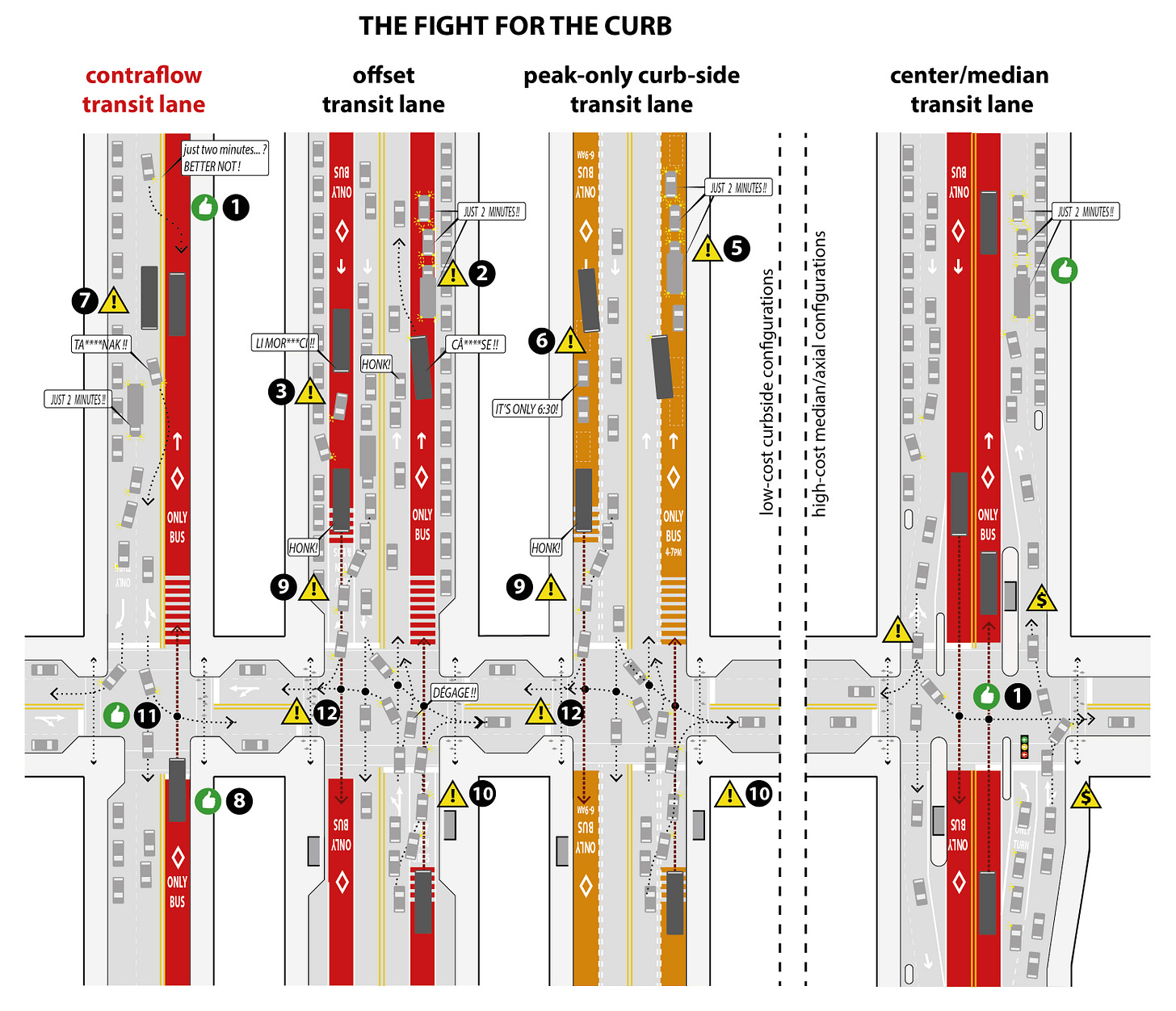
From tactical to strategic deployment: real-life examples of the potential of contraflow transit lanes.
Based on my ongoing research, the initial deployment of contraflow transit lanes in the 1960s is associated with the need to avoid splitting bus routes into parallel streets during the widespread adoption of one-way traffic patterns as a fundamental tool for organizing traffic flows in existing cities. In North America, contraflow transit lanes have been retained as a niche case, serving as an occasional tool to create shortcuts for transit within the grid of one-way streets that characterize traffic patterns in the pre-war parts of cities. However, it is in continental Europe that contraflow transit lanes have truly flourished and reached maturity.
By the 1970s, numerous examples emerged where contraflow bus lanes were not just created accidentally or opportunistically to address a local node but were tactically and strategically deployed along entire corridors or even at a city-wide level. In my ongoing exploration of traffic management plans prioritizing transit, I've encountered an increasing number of unique examples. In this context, I will briefly illustrate three instances that range from sections of a transit corridor (such as Besançon's tramway) to specific areas within a city (like Eindhoven's Centrum loop) to extensive portions of a city (as seen in Bologna's traffic plans from the 1970s-1980s).
Besançon’s tramway
Besancon’s tramway stands out as an exemplary model of low-cost, high-quality, and appropriately scaled urban rail infrastructure. Additionally, it serves as a remarkable illustration of how contraflow transit lanes can be strategically employed over extended stretches of a corridor to address the challenge of limited space for a fully reserved transit lane.
In its central section, Besancon’s tramway features two segments utilizing the alternating contraflow transit lane layout to strike a balance between local accessibility while preventing through-traffic along the transit corridor, minimizing delays for the tramway. This strategy is applied in a 600 m-long section along the Quai Veil Picard and, more expansively, in combination with short transit-only segments, in a longer 1.3 km section through the Northeastern 19th and early 20th-century faubourgs. In both cases, the approach involves using alternating contraflow transit lanes to deter through traffic while simultaneously reorganizing circulation patterns in adjacent streets to facilitate local accessibility. Additionally, the high quality treatment of surfaces, typical of French tramways, makes it more readable for users.
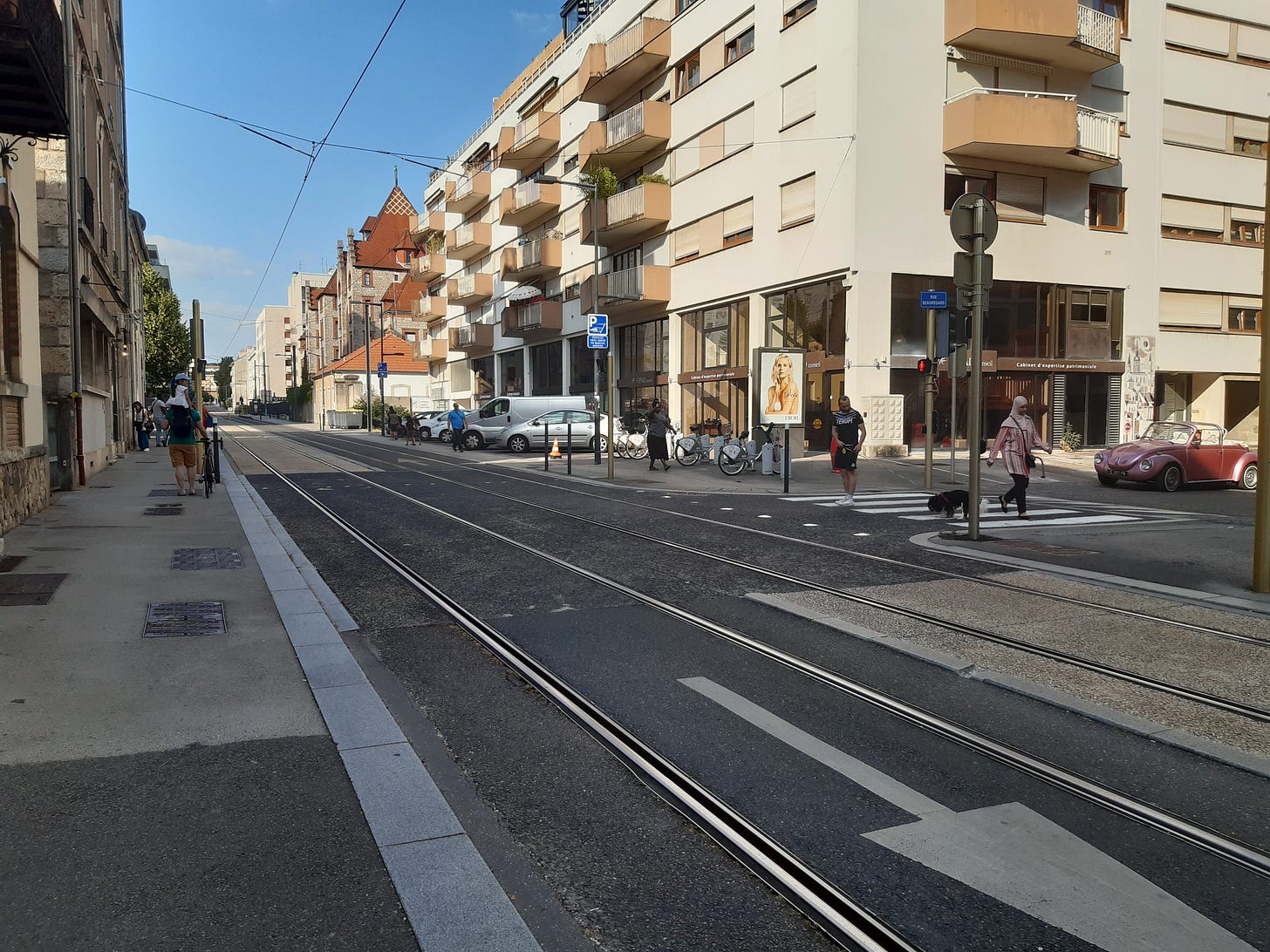
Eindhoven’s centrum loop
Once a predominantly car-oriented city, Eindhoven has recently reoriented its approach to circulation within the city core and along the main approaches. Prioritizing pedestrians, bicycles, and buses, Eindhoven now mirrors the trajectory of other Dutch cities. The loop surrounding the elongated hyper-center, nearly entirely pedestrianized, has been redesigned boasting an almost uninterrupted contraflow bus lane configuration, complemented by a few shared streets (fietstraats) and busways on the radial routes that feed into it.
In tandem with a stricter hierarchy of traffic flows, reducing the number of controlled intersections along the loop in favor of traffic-calming measures like table intersections, the city has established a high-capacity loop. This prioritizes transit while still allowing for local vehicular access, diverting through traffic to the outer ring. This serves as an interesting example of a comprehensive transit priority and traffic-calming scheme based on the use of contraflow transit lanes combined with the high-quality approach to road design for which the Low Countries are renowned.
Bologna’s 1970-80s traffic plans
I've extensively discussed Bologna’s transit priority strategies, which I summarized in my previous article. Those who regularly follow me on Twitter might be growing tired of hearing about it by now. Nevertheless, in my research so far, it stands out as one of the most remarkable examples of a “do more with less” approach on a relatively large city scale. Effective transit priority was achieved through relatively inexpensive modifications to the circulation pattern, pragmatically aligning with the overarching vision outlined in the original 1972 traffic plan, encapsulated by the mayor’s evocative slogan, “Bologna should not suffocate.”
Here, I'll simply highlight how contraflow transit lanes served as one of the practical tools to implement a circulation pattern based on the principles of “environmental areas” (inner streets for local traffic only), “transit priority,” and “preferred itineraries.” This involved directing inbound and outbound through-traffic along defined, more indirect routes compared to transit using one-ways in looping patterns, no-turns signs, modal filters, and contraflow bus lanes. Since the 1990s, the city has also employed dynamic traffic light management at the entire city scale (UTOPIA) to further enhance and regulate flows.
Just, think about it.
At this point, some of you might be thinking that I earn a commission for every contraflow bus lane installed worldwide, considering how frequently I champion this "one simple trick." I wish that were the case, but unfortunately, it's not! As I delve deeper into the history of circulation plans, traffic management, and transit priority policies on both sides of the Pond, I've realized that, despite being widely utilized in many European jurisdictions since at least the 1960s, contraflow transit lanes are one of the most overlooked tools in the planners' toolbox when it comes to transit priority in our North American, sometimes overly-isolated, planning practice.
Contraflow transit lanes are not a miraculous pill or the "one simple trick" that can solve every transit priority problem, nor are they the best instrument in every situation. However, they can be a very useful asset in many cases, particularly when road space is limited, such as in central areas. This is especially true if they are used as part of an approach to transit priority that is both tactical and strategic—a perspective often lacking in the prevalent North American planning approach, which tends to be overly corridor-focused.
While I could delve into the topic of contraflow transit lanes indefinitely, I'll spare you. Through this brief post and my continuous messages on Twitter, my intention is to motivate curious decision-makers to move beyond the "we don't do that here" syndrome. Instead, I encourage them to be curious and explore what others have implemented to make our surface transit faster, more reliable, and thus more attractive and cost-effective to run, all at a low capital cost.
Including that “one simple trick” called contraflow transit lanes



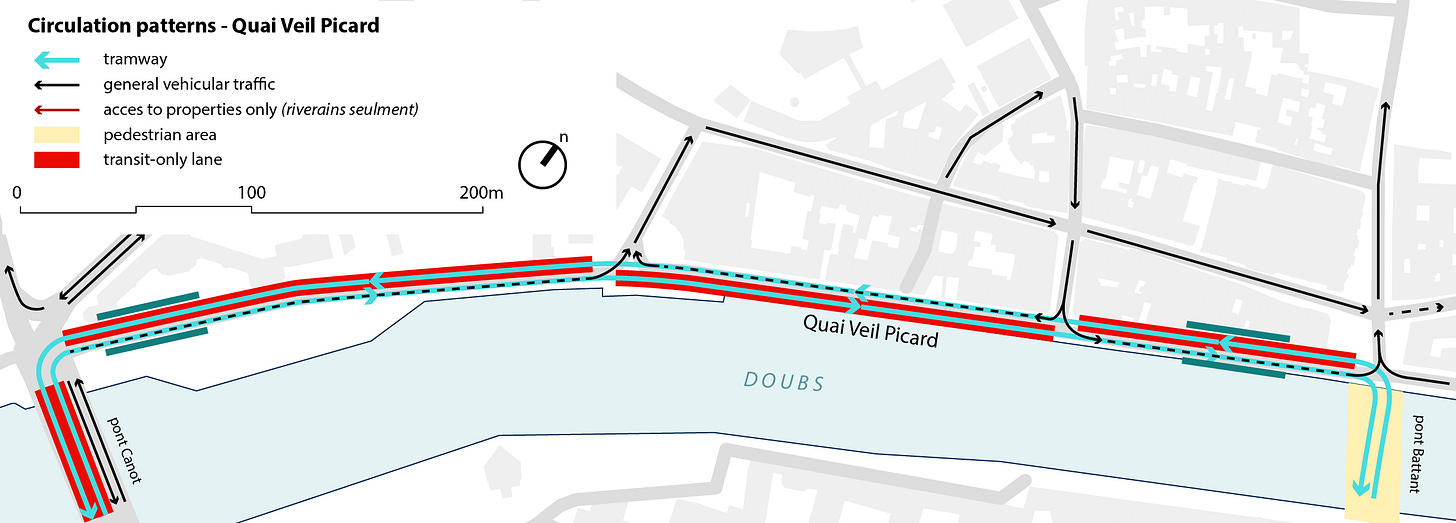
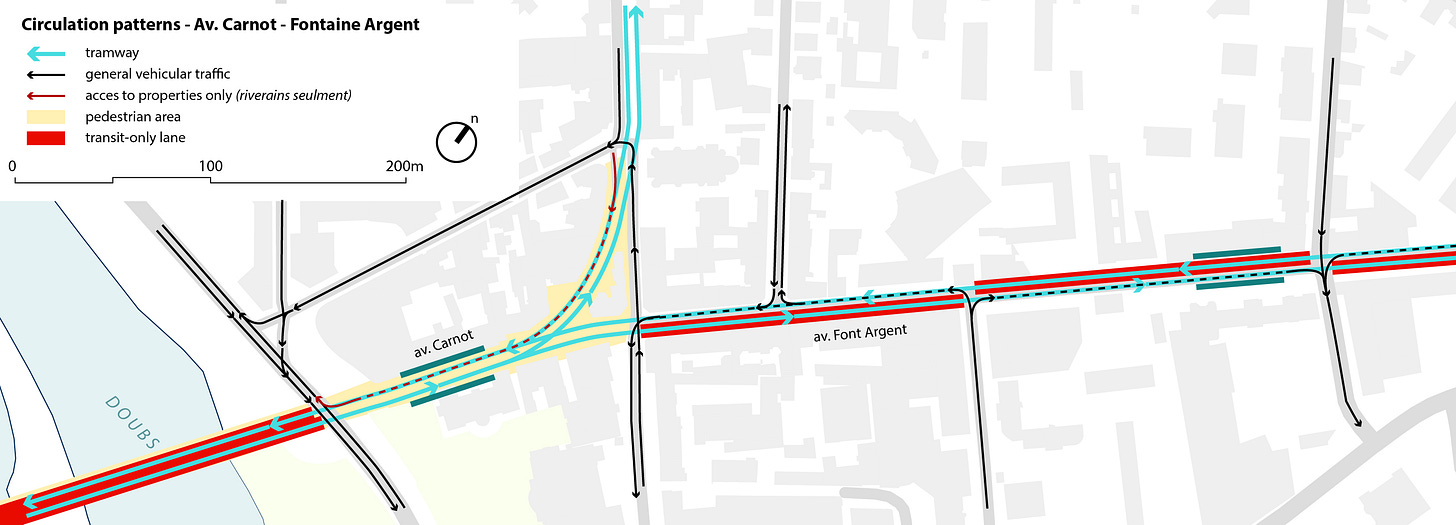
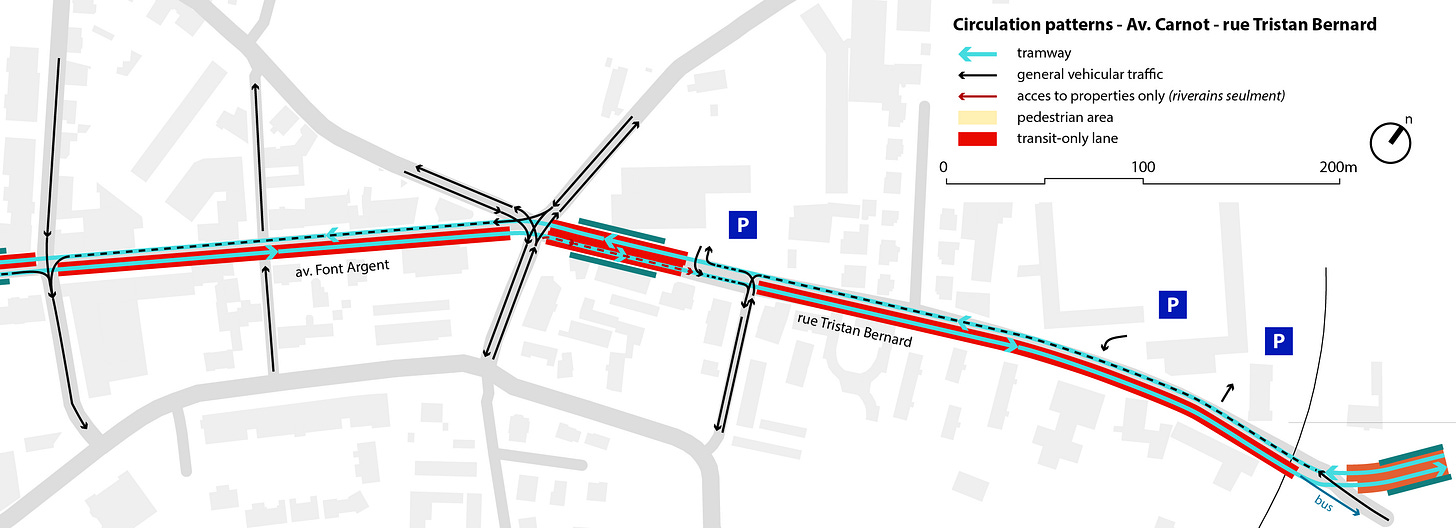
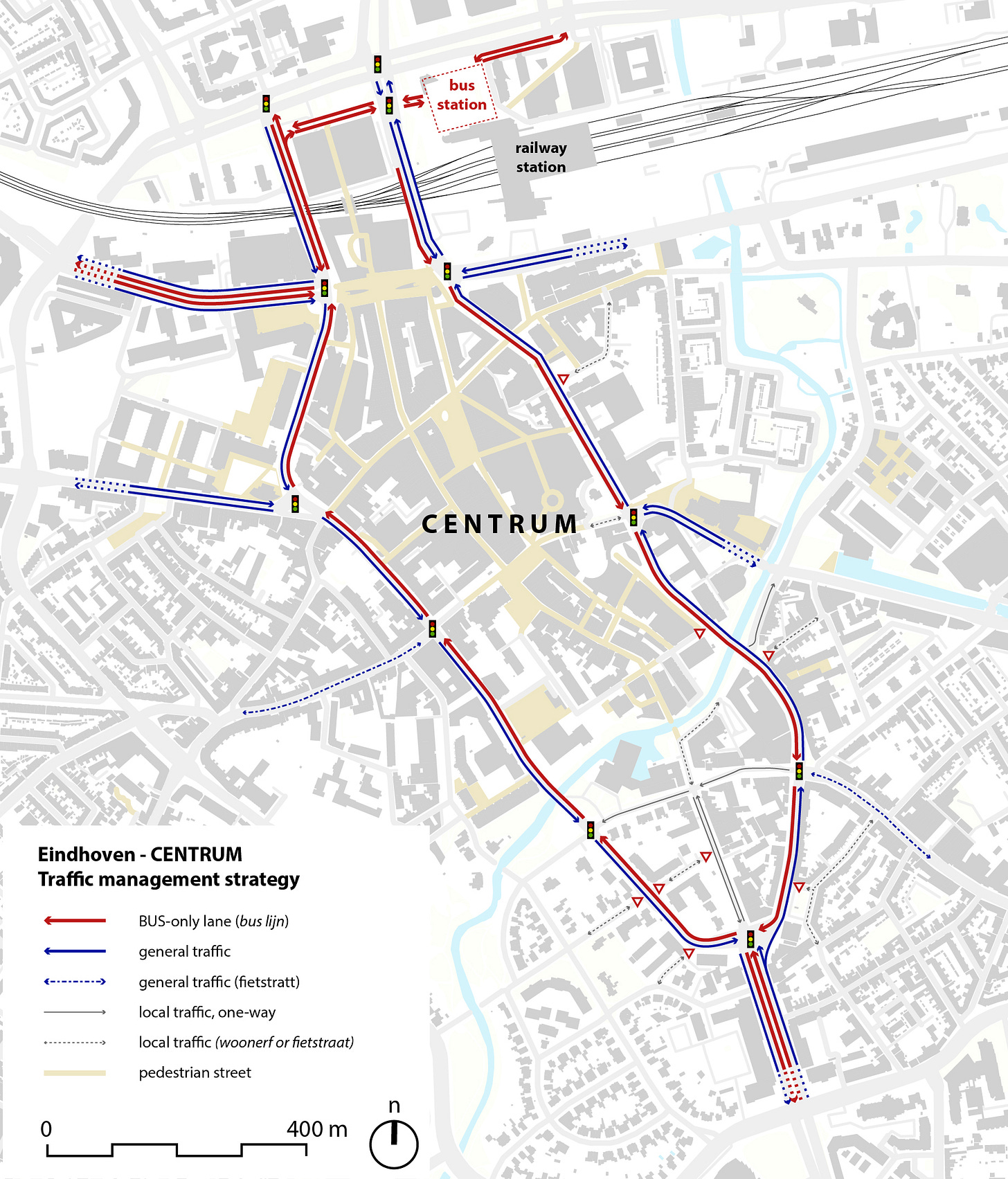
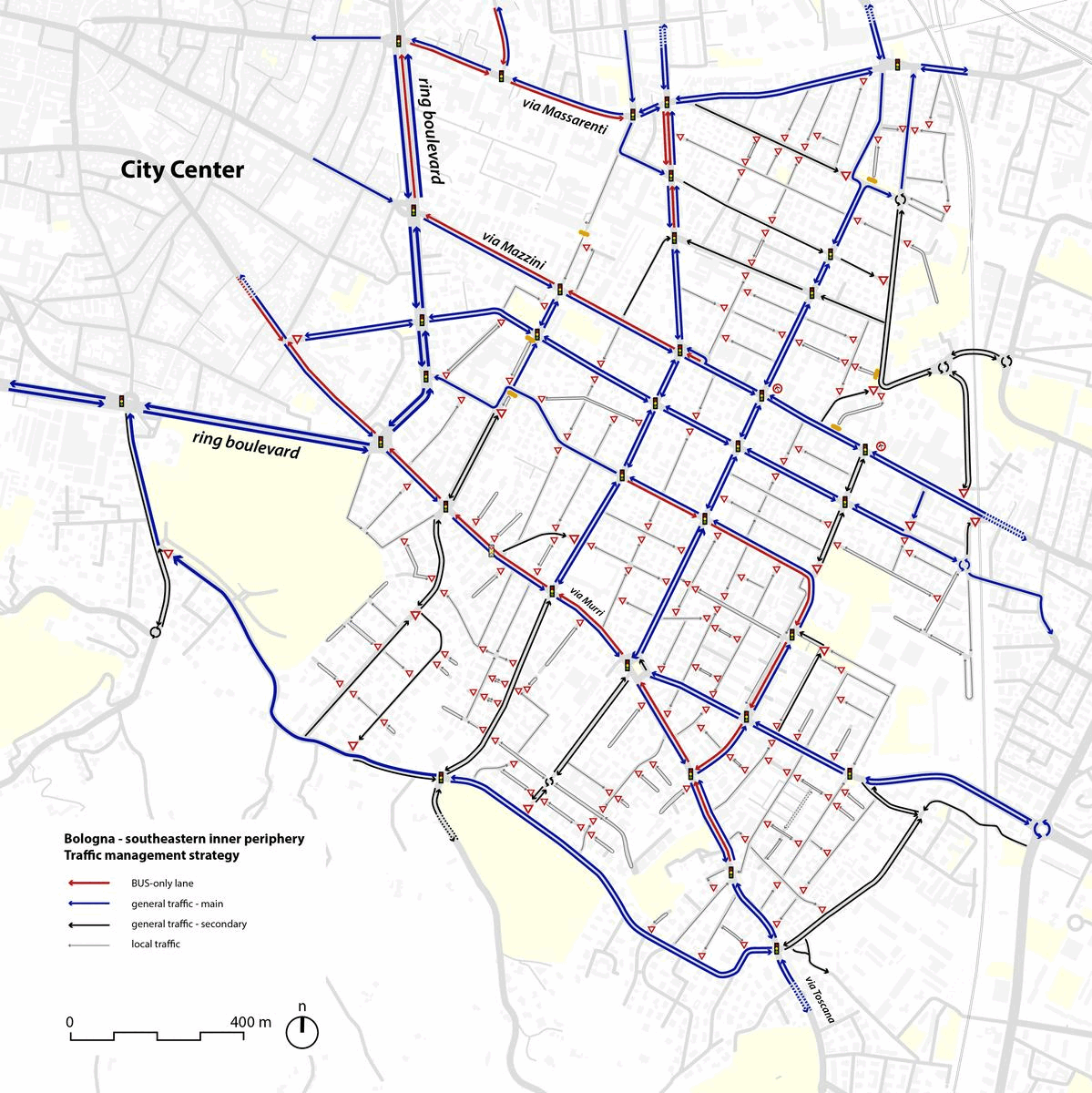
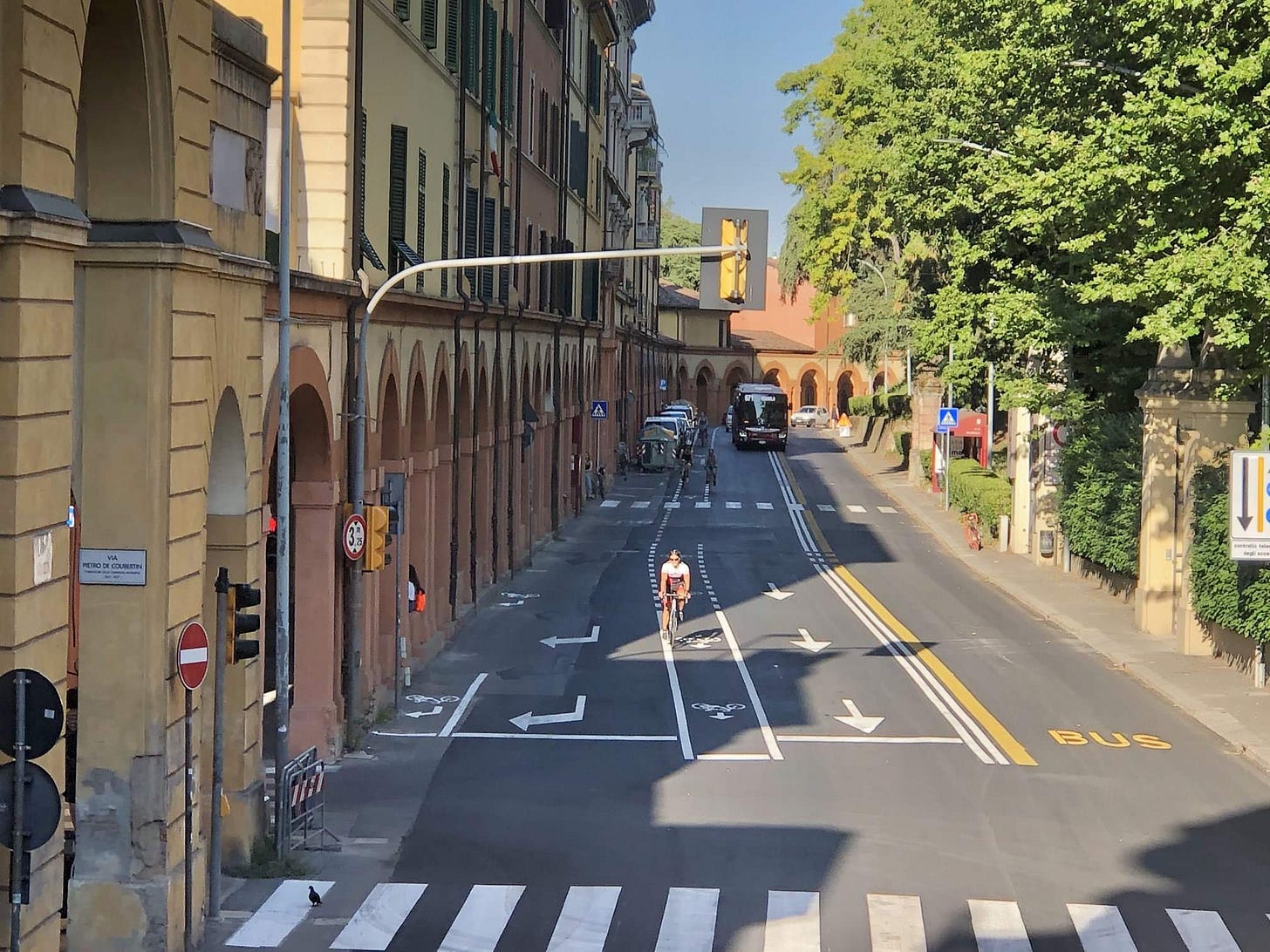
Another antidote to the “we don’t do it here” is the contraflow lane on Pittsburgh’s fifth ave. I don’t know about it’s impact on speeds and reliability though
Excellent paper! I really appreciate the mention of contraflow bus lane in Saragozza Street (in pair with Andrea Costa contraflow lane).